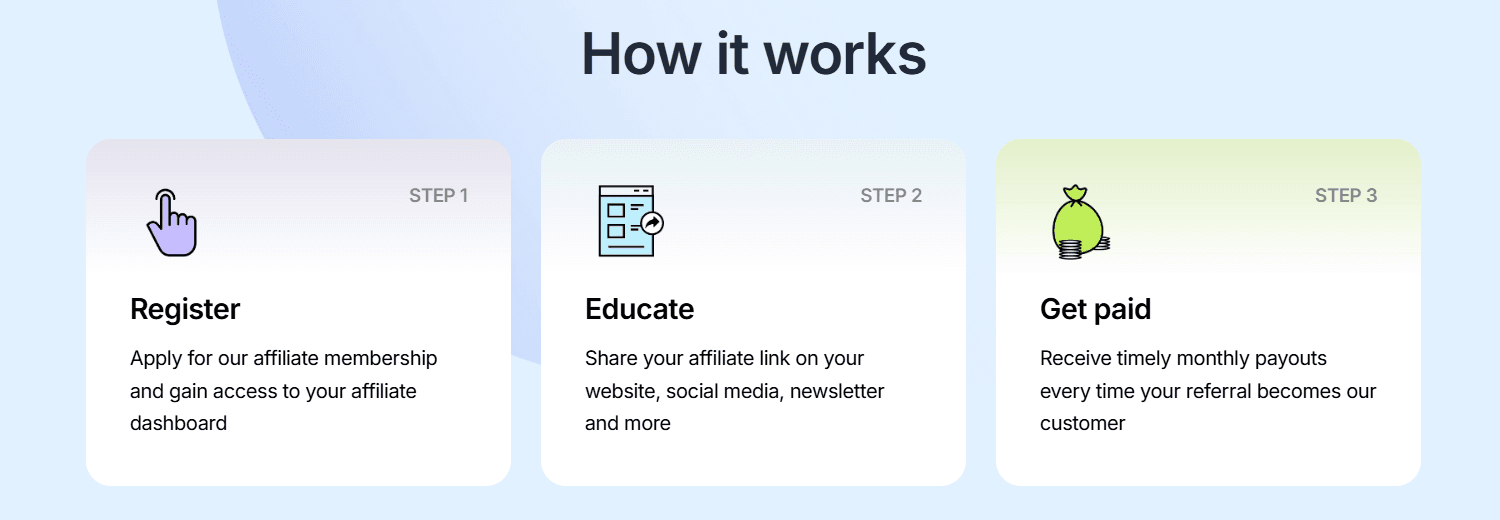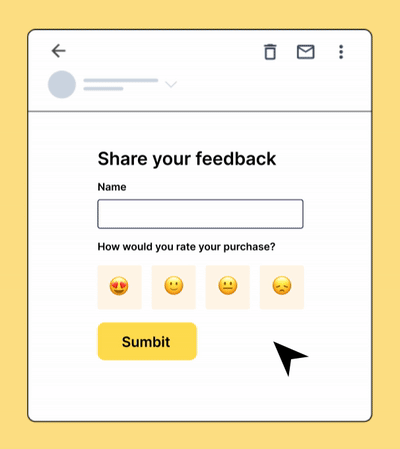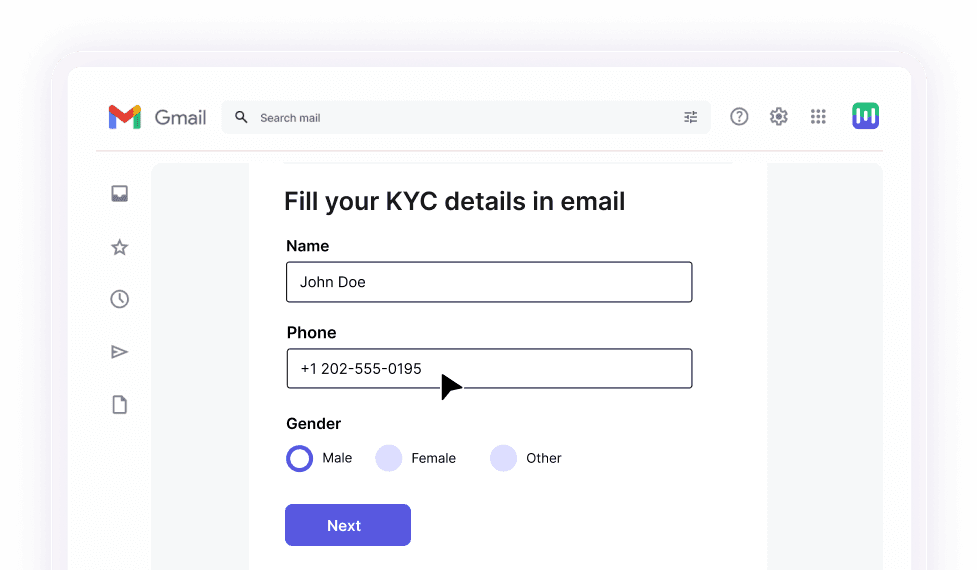What Is affiliate marketing?
Affiliate marketing is performance-based marketing where you partner with third-party affiliates (promoters). They are usually bloggers and influencers who promote your products in exchange for a commission.
Let's take an example of Mailmodo's affiliate program. Here, the affiliate would register and receive a unique affiliate link, which they can share through blog posts, social media, newsletters, or other channels.
For instance, an email marketing consultant could write a blog post on "Best Email Automation Tools for Startups" and include their Mailmodo affiliate link. When a reader clicks the link, signs up for a paid plan, and starts using the platform, the consultant earns a commission on the sale.
This approach benefits both parties—Mailmodo acquires new customers, while affiliates earn a commission for every successful referral. To learn more or sign up, visit Mailmodo's Affiliate Program.

How does affiliate marketing work?
Let’s say you have an affiliate program. Once affiliates join your affiliate program, they receive a unique link containing a tracking ID. This affiliate link, with the tracking ID, allows you to track and attribute sales to specific affiliates.
On the other hand, affiliates promote specific products and share the link to these products that contain the tracking ID we mentioned above. When potential customers click on your affiliate's link and make a purchase, the affiliates earn a commission.
💡 Related guide: A Complete Beginners’ Guide to Getting Into Affiliate Marketing
What is referral marketing?
Referral marketing is a strategy where businesses incentivize existing customers to recommend their products or services to their friends, family, and peers. The existing customers are also rewarded for successful referrals.
Nothing influences people more than a recommendation from a trusted friend. A trusted referral is the holy grail of advertising.
- Mark Zuckerberg, CEO, Meta
How does referral marketing work?
In referral marketing, satisfied customers are encouraged to refer their friends and family members, and when they purchase or subscribe to it, the existing customers are rewarded.
The process is usually made easier with personalized links or codes that are simple and easy to share. Brands use software to create these personalized links or codes, track referrals, and incentivize the advocates.
Take Dropbox’s referral program, for example. It gave users more space for storage for each successful referral.

💡 Related guide: What Is Referral Marketing & How to Use It to Grow?
Affiliate marketing vs referral marketing
Affiliate and referral programs are powerful customer acquisition strategies that leverage the power of personal recommendations and incentives to drive customer acquisition.
While both of the strategies aim to attract new customers, there are certainly differences in the way they work and how they bring about the results. Let’s explore these differences in detail.
| Parameter |
Affiliate Marketing |
Referral Marketing |
| Promoter |
Affiliate partners or third parties who may or may not be your customers. |
Satisfied existing customers. |
| Channels used by promoters |
All digital marketing platforms, such as blogs, Instagram, Pinterest, YouTube, etc. |
Usually, in-product infrastructure or emails. |
| Incentive |
Monetary incentive. |
Non-monetary incentives like storage space in the case of Dropbox, credits, etc. |
| Example |
A blogger earns a commission for a sale through their unique affiliate link. |
A customer gets a free product or discount for referring a friend who makes a purchase. |
Which one is better for your business?
You might guess the answer would be straight, but it depends. This is because it’s not about choosing one over the other.
Many businesses often use both to maximize their growth potential. They think of it like having two different customer acquisition teams.
Your affiliates reach new audiences at scale, while your customers bring in high-quality leads through personal recommendations.
So, it’s best if you choose to use both strategies as it would allow you to make the most of both strategies.
FreshBooks is a perfect example of this dual strategy:
Their affiliate program offers a commission of up to $200 per sale. The affiliates get paid for every trial signup, as well as every upgrade to a paid plan.

Simultaneously, the Freshbooks referral program gives their customers $100 credits once their friend or family member has been a paying subscriber for at least 60 days.

But if you don’t have the bandwidth or budget to set up both and have to choose only one, here are the pros and cons of both. It should be able to make your decision easier.
Pros and cons of affiliate marketing
Pros:
Massive reach: More than half (58%) of content creators in the U.S. said they earn money from affiliate commissions. This makes it the second most popular way for creators to make money.
Also, the content creators who act as affiliates usually have a huge following on social media, which helps you reach massive audiences and increase brand awareness.
Pay only for closed sales: Unlike paid ads, where you pay for clicks or impressions, in affiliate marketing, you only pay a commission when a sale happens.
Cons:
Affiliate fraud risk: Affiliate fraud happens when an affiliate uses tactics to boost their earnings using fake sales. In fact, 17% of leads generated in 2022’s affiliate traffic were fraud. This cost companies approximately $3.4 billion.
Limited control over affiliates: Businesses have limited control over how affiliates promote their products or services.
This can lead to mixed messages about your brand or even harm its reputation if affiliates use aggressive or misleading tactics.
Pros and cons of referral marketing
Pros:
High-quality leads: Referral marketing usually generates high-quality leads as they tap into the trust and credibility people place in recommendations from those they know and trust.
Increased engagement and sales: According to Harvard Business Review, customers who join through a referral make more purchases than customers who join through other methods.
Beyond making more purchases, the referred customers also bring in about 30%-57% more new customers through referrals than other customers.
Cons:
Slower initial growth: Unlike affiliate marketing, you can’t onboard hundreds of referrers. First, you need to build a strong, satisfied customer base before they can start referring others.
Limited reach: While referral marketing is effective in getting new leads, it depends on your current customers. If you have few customers, your reach might be limited.
How to activate referral and affiliate marketing
Successfully running referral and affiliate marketing programs for your brand requires a strategic approach. Here are some key steps to activate and optimize these programs for best results:
1. Build and segment your partner list
Before launching your affiliate or referral program, it's crucial to build and segment a well-structured partner list. Organizing affiliates and referrers by engagement, industry, or past performance enables more targeted communication and efficient program management.
To streamline this, use tools like affiliate marketing platforms for tracking conversions and commissions, spreadsheets for maintaining partner databases, and email marketing tools for outreach and segmentation based on partner activity.
💡 Bonus tip: Maintaining an email list of affiliates and referrers helps you send targeted updates about new promotions, best practices, and exclusive incentives, keeping them engaged and motivated.
2. Optimize onboarding for higher engagement
A smooth onboarding experience ensures your partners understand how to promote your product effectively. Provide clear instructions, marketing assets, and easy access to tracking links. Consider a step-by-step onboarding guide, video tutorials, or even a dedicated community forum.
💡 Bonus tip: Use automated email sequences to onboard affiliates and referrers effectively. The first email could welcome them, the second could provide them with essential resources, and follow-up emails could nudge them to promote the platform or take action.
3. Gather feedback to improve your program
Regular feedback from affiliates and referrers helps refine your program. Conduct surveys, host one-on-one check-ins, or analyze performance metrics to identify bottlenecks and improve incentives. Tools like Google Forms, Typeform, or embedded forms within platforms can streamline feedback collection.
💡 Bonus tip: Send interactive forms within emails to collect direct feedback from affiliates and referrers.

4. Boost engagement with gamification
Adding an element of competition or rewards can encourage more participation. You can introduce leaderboard rankings, milestone-based incentives, or exclusive bonuses for top performers. Gamification elements like points, badges, or spin-the-wheel rewards can make the program more engaging.
Gamify your referral and affiliate programs using interactive email elements like spin-the-wheel for random rewards or real-time leaderboards inside emails using AMP technology.















